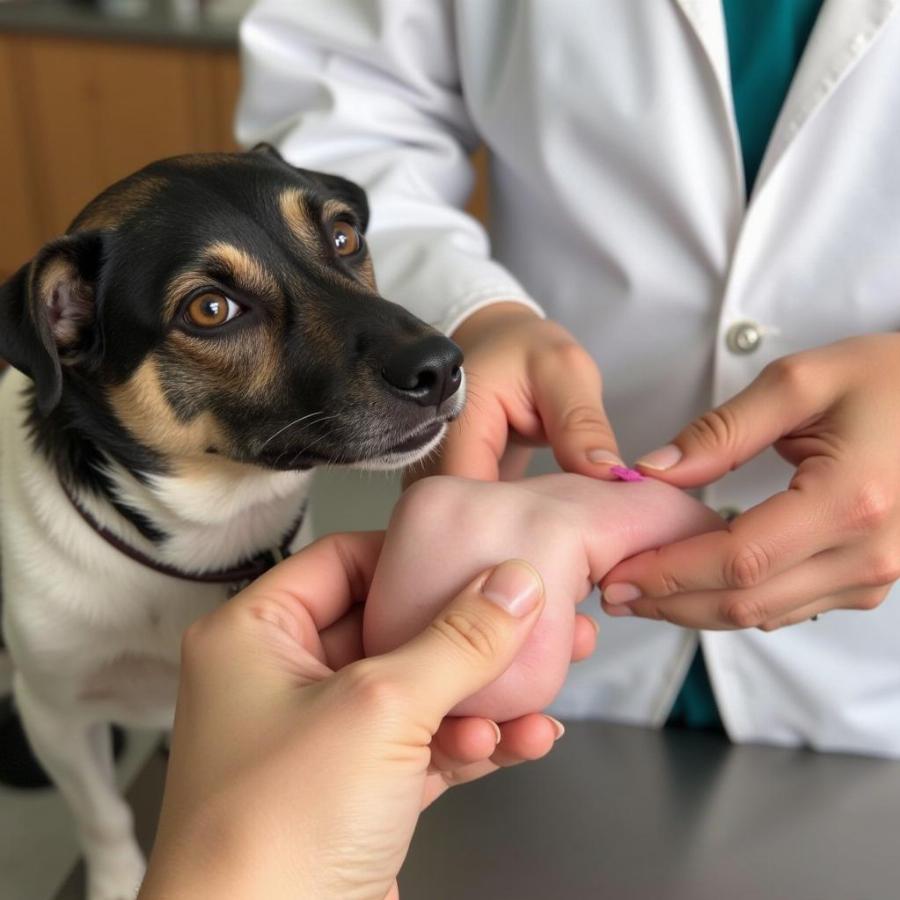Dehydration in dogs can be a serious issue, leading to health problems like kidney disease and heatstroke. If you’re asking yourself, “How to get my dog to drink more water,” you’re in the right place. Ensuring your furry friend stays adequately hydrated is crucial for their overall health and well-being. This article will guide you through practical strategies and tips to encourage your canine companion to lap up more H2O.
Why is My Dog Not Drinking Enough Water?
Several factors can contribute to a dog’s decreased water intake. These can range from simple preferences to underlying medical conditions. Understanding the potential reasons can help you address the issue effectively. Is it the taste of the water? Perhaps your dog prefers running water to still water. Sometimes, stress or changes in routine can also affect their drinking habits. More seriously, medical conditions like kidney disease, diabetes, and infections can also lead to decreased water intake.
How Much Water Should My Dog Drink?
A general guideline is that a dog should drink about an ounce of water per pound of body weight each day. So, a 20-pound dog should ideally drink about 20 ounces of water daily. However, this can vary depending on factors like activity level, climate, and diet. A dog that spends the day running around in the park will naturally need more water than one lounging indoors. Similarly, dogs fed dry kibble generally drink more water than those on a wet food diet.
Practical Tips to Encourage Water Intake
Here are some actionable strategies to entice your dog to drink more water:
- Offer Fresh Water Regularly: Always ensure your dog has access to clean, fresh water. Change the water at least once a day, and more frequently in warmer weather.
- Multiple Water Bowls: Place water bowls in different locations around your house and yard, making it easily accessible for your dog.
- Flavor It Up: Add a little low-sodium chicken broth or beef broth to their water to make it more appealing. You can also try adding dog-friendly fruits like slices of cucumber or apple.
- Running Water Fountain: Many dogs prefer the taste and movement of running water. A pet water fountain can encourage them to drink more.
- Wet Food: Adding water to your dog’s dry kibble or switching to wet food can significantly increase their water intake.
- Ice Cubes: Adding a few ice cubes to their water bowl can make it more refreshing, especially during the summer months.
When to See a Vet
While slight fluctuations in water intake are normal, a sudden and significant decrease or increase can indicate a health problem. If your dog exhibits signs of dehydration like lethargy, dry gums, sunken eyes, or loss of appetite, consult your veterinarian immediately. Early diagnosis and treatment are crucial for managing any underlying medical issues.
How can I tell if my dog is dehydrated?
One simple way to check for dehydration is by gently pinching the skin on the back of your dog’s neck. If the skin quickly returns to its normal position, your dog is likely hydrated. However, if the skin stays tented or returns slowly, it could be a sign of dehydration.
 Checking a Dog for Dehydration
Checking a Dog for Dehydration
Conclusion
Encouraging your dog to drink more water is essential for their health. By understanding the factors influencing their water intake and implementing the strategies outlined above, you can ensure your furry companion stays properly hydrated and happy. Remember to consult your vet if you have any concerns about your dog’s drinking habits.
FAQs
- Is it okay to give my dog flavored water? Yes, as long as the flavoring is dog-safe and doesn’t contain artificial sweeteners or harmful additives.
- How often should I clean my dog’s water bowl? At least once a day, and more often in warm weather.
- Can I give my dog ice water? Yes, especially during hot weather. Some dogs enjoy the coolness and crunch of ice cubes.
- My dog only drinks from puddles outside, what should I do? This could be due to a preference for moving water. Try a water fountain or adding broth to their bowl.
- What are the signs of severe dehydration in dogs? Lethargy, sunken eyes, dry gums, loss of appetite, and increased heart rate.
- My senior dog is drinking less water, is this normal? While age-related changes can affect water intake, it’s important to rule out underlying medical conditions. Consult your vet.
- Can certain medications affect my dog’s water intake? Yes, some medications can increase or decrease thirst. Discuss any medication side effects with your vet.
More helpful resources:
Beaut Dogs is your trusted source for all things related to canine companions, offering comprehensive and reliable information about dog breeds, care, and well-being. For personalized advice and expert answers, don’t hesitate to reach out to us at [email protected]. We’re here to help you provide the best possible care for your beloved furry friend. Visit Beaut Dogs today!
If you are considering adding a new dog to your family, you might find our articles about canned puppy dog food and whether does kohl’s allow dogs helpful.